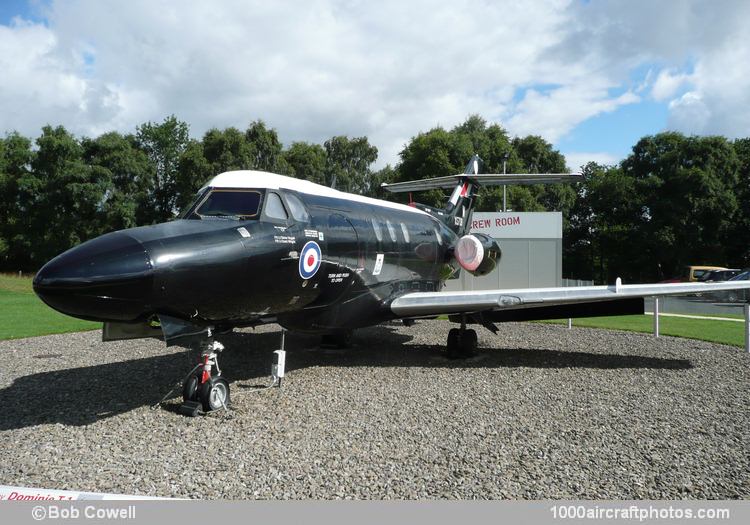12/31/2019. Remarks by Johan Visschedijk: "The Dominie T.Mk.1 was the first jet-powered navigation trainer designed specifically for such a purpose to enter service with the RAF. A military derivative of the HS.125 executive jet, the Dominie superseded the Meteor NF(T).Mk.14 as the RAF's standard navigation trainer for advanced students destined for fast jets with first-line squadrons. Twenty T.Mk.1s were built for the RAF (s/n XS709 to XS714 and XS726 to XS739) by the Chester division of Hawker Siddeley Aviation Ltd.
Powered by two 3,310 lb (1,501 kg) st Bristol Siddeley Viper 301 turbojets, the type was first flown in December 1964 and first entered service with No. 1 Air Navigation School at Stradishall, Suffolk, in December 1965. The first navigators to qualify for their wings on the Dominie passed out in April 1966. Stradishall operated ten Dominies for 'high/fast' training, supplemented by eleven Varsities for 'low/slow' training. Dominie students had some 45 hours of flying instruction spread over 21 sorties, half of them at night. Training flights normally took place at between 30,000 and 35,000ft (9,144 and 10,668 m), and in the final stages of the course exercises were flown to Malta or Gibraltar, via Nice or Istres in France.
Internal cabin arrangements provided for two pilots, a staff navigator, a supernumerary crew member and two students working at a transverse navigator's bench at the rear. The very comprehensive navaids included Decca Navigator, radio compass, Doppler and a periscope sextant. The Dominie differed externally from the civil HS.125 Srs.1 in having an extended wing center section fairing housing electronic equipment, and a ventral fin.
In the 1990s eleven of the Dominie fleet were upgraded to what was initially designated T.Mk.2 standard, but later the type was still referred to as the T.Mk.1. The upgrade included a modern avionics suite, new systems, a cabin layout for up to five students/instructors, and new longer nose profile to accommodate the Thorn Super Searchwater radar. The upgrade was done by Marshall Aerospace of Cambridge and work on the first aircraft (s/n XS728) started in July 1992, in upgraded form this was first flown on August 31, 1994. From 1997 on, the T.Mk.1s had their standard red/white/grey livery replaced by high-visibility all over black livery with white on the top of wings, fuselage and tail plane. The Dominie T.Mk.1 was withdrawn from service in January 2011.
The pictured aircraft was the first T.Mk.1 built and it first flew on December 30, 1964. In January 1965 it was given the 'Class B' marking G-37-65 as it was used for engine trials by Rolls-Royce. It was handed over to the RAF on March 30, 1965, and subsequently sent to the A&AEE at Boscombe Down for evaluation. Following formal introduction into service of the Dominie in December 1965, XS709 was assigned to No. 1 Air Navigation School (ANS) at RAF Stradishall, Suffolk. It was briefly used by the College of Air Warfare at RAF Manby in Lincolnshire, where after it returned to the No. 1 ANS. In August 1970, the aircraft was transferred to No. 6 Flying Training School (FTS) at RAF Finningley in Yorkshire, which moved to RAF Cranwell in Lincolnshire in September 1995. After the withdrawal of the type in January 2011, XS709 was handed over to the RAF museum at Corford on February 15, 2011."
